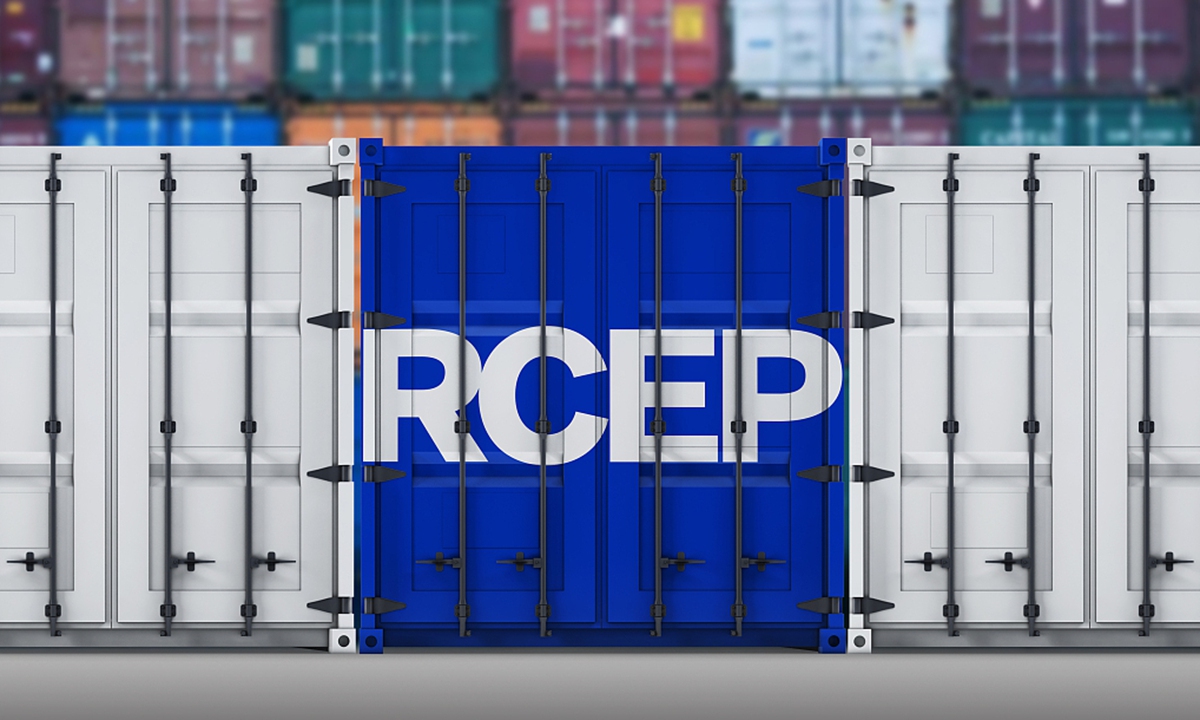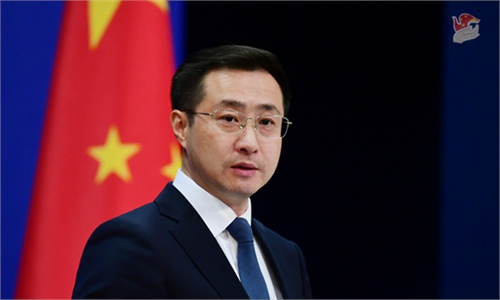RCEP consolidates China’s foreign trade basics, helping boost influence after three years’ implementation: MOFCOM

RCEP Photo:VCG
China's Ministry of Commerce (MOFCOM) said on Thursday that Regional Comprehensive Economic Partnership (RCEP) has bolstered China's foreign trade and ramped up its influence in the past three years.
RCEP is the world's largest free trade agreement in terms of participating population, trade scale, and development potential. Three years after its effective implementation, its expanding influence has deepened trade and investment ties among the members in the region, and becoming the main channel for Asia-Pacific economic integration, He Yadong, spokesperson of MOFCOM said at the routine press conference.
Data from MOFCOM showed that China's trade in goods with RCEP members has consistently accounted for over 30 percent of China's total trade, since the entry into force of RCEP, reaching 12.7 trillion yuan ($1.73 billion) in 2023, marking a 6.3-percent growth from 2021 levels.
From January to November 2024, it has reached 12 trillion yuan, an increase of 4.4 percent year-on-year.
The RCEP has effectively consolidated the fundamentals of China's foreign trade, the spokesperson said.
The spokesperson said that China's Hong Kong SAR, Sri Lanka, and Chile have submitted formal applications to join RCEP, and several other economies have shown keen interest in joining the pact.
"The attractiveness and influence of RCEP are constantly increasing," He noted.
The RCEP also deepens the process of regional economic integration, as it continues to expand market access for goods, services, and investments within the region.
In 2023, the total regional trade volume reached $5.6 trillion, and the amount of green-field investment attracted by the region was 2.2 times higher than in 2021.
As the largest economy in the RCEP, China will continue to implement RCEP in a comprehensive and high-quality manner to advance Asia-Pacific economic integration and contribute to regional development and prosperity.
The RCEP celebrated its third anniversary of effective implementation on January 1. It comprises 15 countries, including 10 countries of the Association of Southeast Asian Nations (ASEAN), as well as China, Japan, Republic of Korea, Australia and New Zealand.
China will continue to implement the RCEP to promote the upgrading of free trade in the Asia-Pacific region and achieve common development and prosperity, Mao Ning, spokesperson of Foreign Ministry said at a regular news briefing on January 3.
According to a study conducted by the Asian Development Bank, the RCEP is expected to increase the member economies' incomes by 0.6 percent by 2030, adding $245 billion annually to regional income and creating 2.8 million jobs.
Global Times



